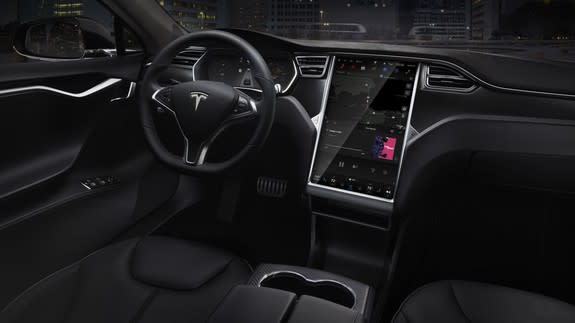Tesla just ramped up its Autopilot system

After a delay, Telsa's new Autopilot is finally ready for mass rollout.
Tesla mastermind Elon Musk first teased the new system, Enhanced Autopilot, for the automaker's HW2 hardware package (which has been included in all new models since October) back in December, but the software release was delayed by bugs. Then came a limited update to 1,000 cars and a passive download for the whole HW2 fleet.
SEE ALSO: Modified Tesla Model S goes from 0-62 mph in 2.1 seconds
As usual, Musk took to Twitter to announce the release.
Autopilot for HW2 rolling out to all HW2 cars today. Please be cautious. Some cars will require adjustment of camera pitch angle by service.
— Elon Musk (@elonmusk) January 21, 2017
Instead of overwhelming the system with all of HW2's capabilities at once, Autopilot updates will be released at a staggered pace throughout the year via over-the-air downloads every two to six weeks.
The first release gives Tesla drivers access to Traffic Aware Cruise Control, Forward Collision Warning, and Autosteer+ features, according to reports from Business Insider. The Autosteer+ function, which works in tandem with Traffic Aware Cruise Control to automatically keep vehicles in their lanes during heavy traffic, will at first be limited to use at speeds below 45 mph as the system collects more data.
While some impatient Tesla owners might be frustrated by the delays and abundance of caution in the software rollout, it's for good reason. Last week, the automaker's existing tech was cleared of responsibility in an investigation following the first Autopilot fatality. Still the incident brought an increased focus on Tesla's autonomous system, especially in the way users are informed of its functions and capabilities.
Still, the old Autopilot was a Level 2 autonomous system, which means it required active human control for the driving experience. With the HW2, however, Tesla is aiming for Level 5 autonomy. This means the automated system can perform all driving tasks as if a person were controlling the car.
Musk made it clear that the goal is to have the HW2's full potential for autonomy unlocked by the end of this year. In response to a question on Twitter, he gave a rough timeline that the autonomous shift could begin as soon as March.
@tsrandall 3 months maybe, 6 months definitely
— Elon Musk (@elonmusk) January 24, 2017
With the new Enhanced Autopilot and hardware with the potential for full autonomy in cars on the road right now, Tesla looks like it could be the first automaker to actually solve the self-driving puzzle. There will definitely be more delays to fine-tune the system, but it's better to be safe than sorry. If the company can achieve its goal and deliver autonomy by the end of the year, it'll be well worth the wait.

 Yahoo News
Yahoo News 